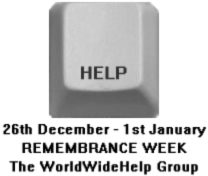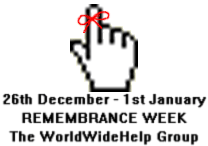 Last year, on the 26th December, an earthquake, and then a tsunami, killed, wounded, or impoverished hundreds of thousands of people in South Asia.
Last year, on the 26th December, an earthquake, and then a tsunami, killed, wounded, or impoverished hundreds of thousands of people in South Asia.During the course of the year, other disasters took their toll too. Most devastating of them: Hurricanes Katrina and Rita on the South-East coast of the USA; and another enormous earthquake near Pakistan's border with India.
These disasters took their immediate toll, and, each time, the world tried to help. But as calamity piled upon calamity, there has been a certain amount of fatigue. Perhaps people's stock of goodwill has run low. Perhaps seeing too much suffering hardens us.
But, the fact is, the suffering from those disasters has not ceased. Parts of South Asia have still not recovered from December 26th, 2004. In the USA, normalcy hasn't returned to New Orleans. In Pakistan, thousands are still homeless, and may not survive the harsh Himalayan winter.
They need your help.
Last December and this January, the online community came together as never before to help in the aid efforts in South-East Asia. The lessons learned there were put to use, and improved upon, when the other tragic events of the year unfolded.
Can we harness that goodwill, that togetherness, that willingness to help once more?
The WorldWideHelp group would like you to join us in Remembrance Week. Here's what we suggest you do.
 Use your blogs, your home pages, your wikis, your newsletters. Link to your favourite charities and NGOs, write a paragraph about them and the work they are doing, and ask your readers to make a donation. (If you'd like to find some more charities and NGOs, please take a look at this page on our TsunamiHelp wiki, this one on our KatrinaHelp wiki, or this one on our QuakeHelp wiki.)
Use your blogs, your home pages, your wikis, your newsletters. Link to your favourite charities and NGOs, write a paragraph about them and the work they are doing, and ask your readers to make a donation. (If you'd like to find some more charities and NGOs, please take a look at this page on our TsunamiHelp wiki, this one on our KatrinaHelp wiki, or this one on our QuakeHelp wiki.)Please link back to this page to help pass the word. You can use the image above.
Please use this Technorati Tag: Disaster Remembrance Week.
Here's the code:
<a href="http://www.technorati.com/tag/disaster%20remembrance%20week" rel="tag">Disaster Remembrance Week</a>
In this post, we have a few more banners and buttons, with intructions on the code you must post to use them.

